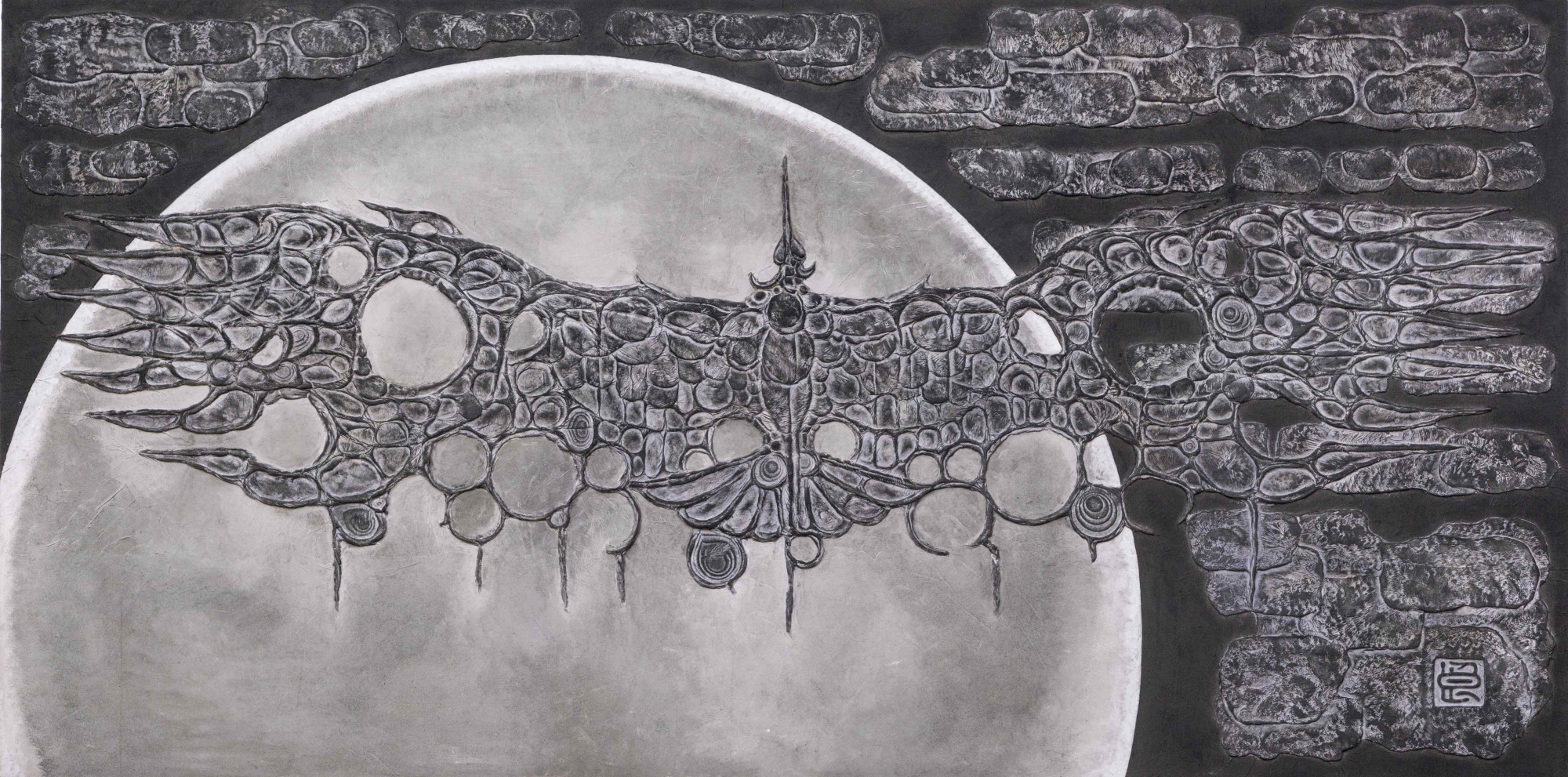Born to a noh actor, Ryonosuke Shimomura (1923-98) was expected to follow in his father's footsteps. He preferred baseball. Disliking study and with poor grades, he went to art school, thinking it would be an easy ride.
Enrolled in two successive courses of study in Kyoto from 1936 to 1943, he conceived techniques that both alarmed his teachers (one thought him color blind, he wasn't) and saw him awarded the lowest grades in his classes. This unusual artistic career is the subject of "Shimomura Ryonosuke: In Praise of Play," (in two stages, the second beginning Jan. 7) at BB Plaza Museum of Art in Kobe.
In 1948, Shimomura saw the first exhibition of the avant-garde nihonga (Japanese-style painting) group Pan Real Art Association, formed by Mikami Makoto (1919-72) and Yamazaki Takashi (1916-2004). He became a principal member later that year, subsequently giving the organization leadership over decades until his death. While consisting of nihonga painters, Pan Real's artistic sensibilities were frequently Western, as were Shimomura's early interests. This is seen in his prewar sketches, influenced by Leonardo da Vinci and Honore Daumier, and in the exaggerated features of a weathered and weary laborer in "Worker-san" (1946), resembling an oil painting.



















With your current subscription plan you can comment on stories. However, before writing your first comment, please create a display name in the Profile section of your subscriber account page.